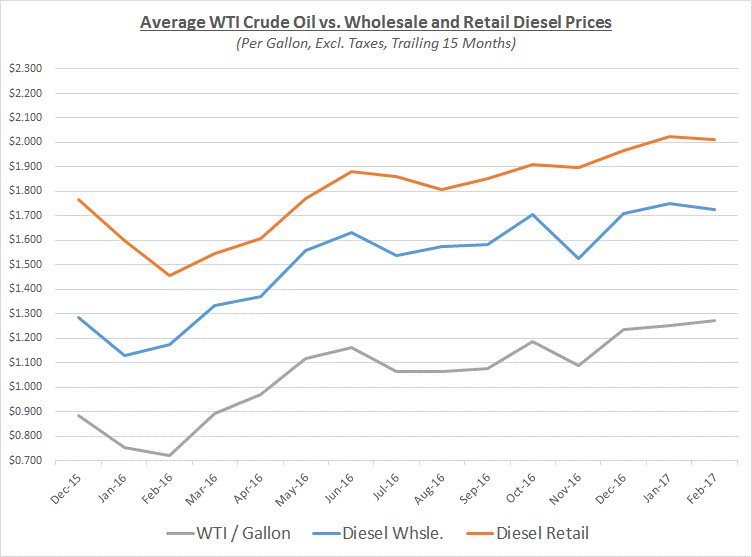Oil prices continued to trade in a narrow range between $52 and $55 per barrel during February following a similar pattern for the past few months. However, the overall price range has increased slightly compared to the previous months primarily because OPEC and other foreign countries are strongly adhering to the oil production cutbacks they agreed to back in November. The following graph shows the daily price movements over the past three months:

The agreement by OPEC and other foreign countries to reduce production started during January 2017 and has been executed with a level of compliance that has been much stronger than expected based on this group’s historical performance. Their solidarity to reduce supply has provided continued support for higher prices which has outweighed downward pressure from other market factors. Further price increases have been avoided so far as a result of very high inventory levels, continued increases in the number of US domestic production rigs, and a strong US dollar.
Despite the small uptick in crude prices during February, wholesale and retail fuel prices showed very small declines as refined product inventories grew. The graphs below show the movement of crude (converted to gallons) along with wholesale and retail fuel prices over the trailing 15 months:


Since retail prices moved closely in sync with wholesale, retail margins did not reflect any significant changes. Retail margin trends for diesel and gas are shown in the following graph:

As a result of the market changes in February, most fleets would not have seen any significant changes in their prices regardless of whether they purchased fuel at retail or had deals based on wholesale prices.
Looking beyond February, Sokolis anticipates oil will continue to trade near the mid-$50s/barrel for the next several months. This assumes OPEC and other foreign oil producers continue to adhere to their production cuts and demand begins to draw down inventory levels. If domestic rig counts continue to rise along with inventory levels and the strength of the US dollar, it is possible that prices could fall back toward $50/barrel or below.
If you’re concerned about the impact of future fuel price changes for your fleet and want to know if you’re receiving the best fuel prices possible, contact Conor Proud at Sokolis, [email protected] or 267-482-6159. We are the nation’s leading independent fuel management consulting team and can help you make sure that your fuel management program is running at peak efficiency.